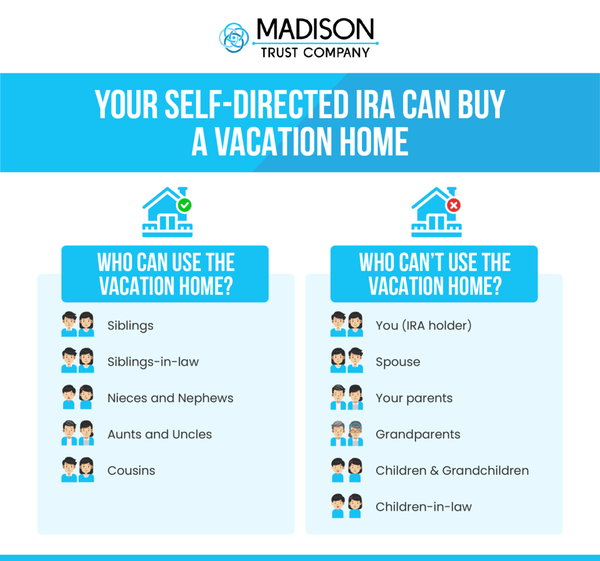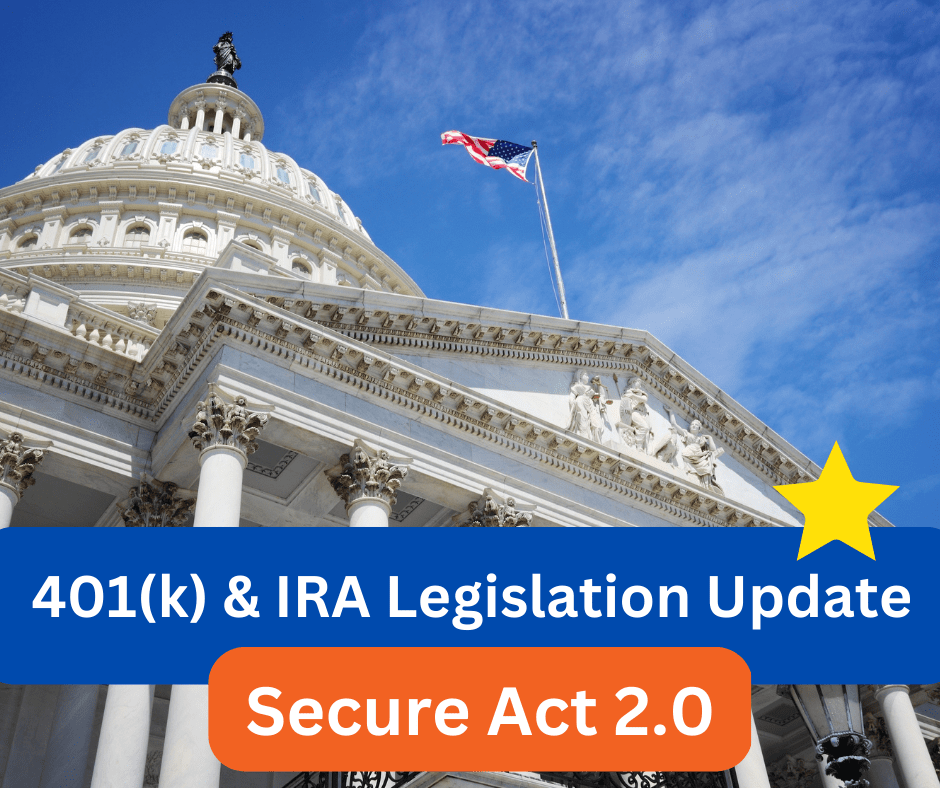Can I Use a Self-Directed IRA to Buy a Vacation Home?
A Self-Directed IRA gives you a whole new view on saving for retirement by allowing you to invest in alternative assets like real estate.
With a standard IRA, you might find yourself sweating out the stock market. In a Self-Directed IRA, you can build a real estate portfolio that generates steady passive income with high growth potential. After the age of 59 ½, you can begin to take tax-deferred or tax-free distributions from your Self-Directed IRA, which may also be referred to as a Real Estate IRA if you’re using it as such. The IRA owns a given property until you distribute 100% of ownership, at which point it becomes your personal property. This leads many people to ask, “Can I use a Self-Directed IRA to buy a vacation home?”
Yes, But...
A Self-Directed IRA can invest in just about any type of real estate, from commercial office buildings and retail centers to raw land, farmland, and residential properties including single-family homes, multi-family homes, condos—and yes, vacation homes and vacation rentals. However, the property must be strictly for investment purposes. This means that you can use a Self-Directed IRA to buy a vacation home, but you can’t vacation in that home while it’s in your IRA.

Disqualified Persons (Including You)
In a Real Estate IRA, there are disqualified persons who cannot use the property or properties owned by the IRA. Those disqualified persons are:
- You (IRA holder)
- Your Parents
- Grandparents
- Children
- Spouse
- Children-in-law
- Grandchildren
Disqualified persons cannot be involved in Real Estate IRA transactions, either. You cannot rent or sell a vacation home to the family members listed above if the home was purchased through your Real Estate IRA. Doing so would result in a prohibited transaction with potentially serious tax consequences.
Who Can Use the Home?
Not all family members are disqualified from using a vacation home purchased through your Real Estate IRA. You can rent or sell the home to:
- Siblings
- Siblings-in-law
- Nieces and Nephews
- Aunts and Uncles
- Cousins

It’s always nice to take care of family, especially when you own a nice vacation home, but remember that the goal is to fund your retirement. With that, consider the following benefits of having a vacation home as a Self-Directed IRA real estate investment.
Short-Term Strategy
Remember, you can’t use a vacation home that’s in your Self-Directed IRA. It’s a vacation home, but not your vacation home! You don’t even technically own the property; your IRA does. That’s a good thing, because you can rent the home out to vacationers, and your designated Self-Directed IRA custodian, such as Madison Trust, will handle the property income as well as expenses. During that time, the income will be growing tax-free or tax-deferred, depending on whether you’ve chosen a Roth or Traditional IRA to serve as your Real Estate IRA.
Long-Term Payoff
It may not be your vacation home right now, but it can be in the future. When you’re ready to take a 100% distribution, the property is all yours to enjoy. So, you can envision where you want to kick back and unwind later in life, buy a vacation home there now, and put the investment to work in your Real Estate IRA for the time in between. It takes patience, indeed, but that’s what investing is all about.
If you’re new to investing in real estate with a Self-Directed IRA, there are many nuances to be aware of that could lead to mistakes. For example, it’s important to know upfront that your Self-Directed IRA custodian must be listed as the buyer and owner on all documents, and it’s the custodian who will wire the earnest money deposit (EMD) through your IRA to open escrow and begin closing on a property. See our step-by-step guide explaining how to buy real estate with a Self-Directed IRA.
Disclaimer: Madison Trust Company does not provide legal, tax or investment advice. Prior to making any investment decisions, please consult with the appropriate legal, tax, and investment professionals for advice.











